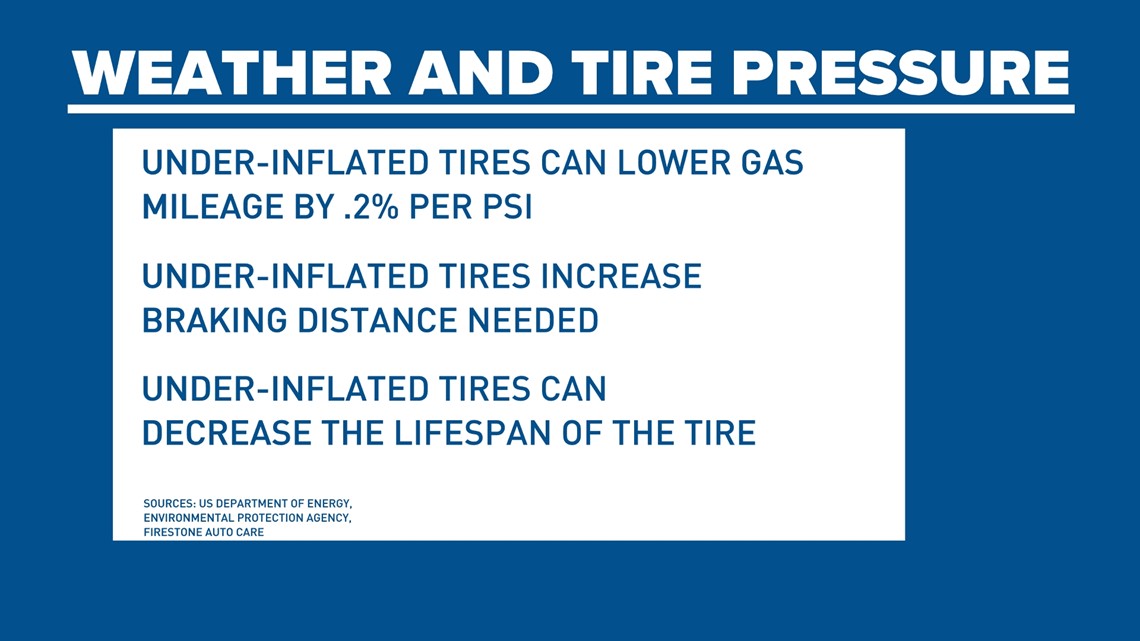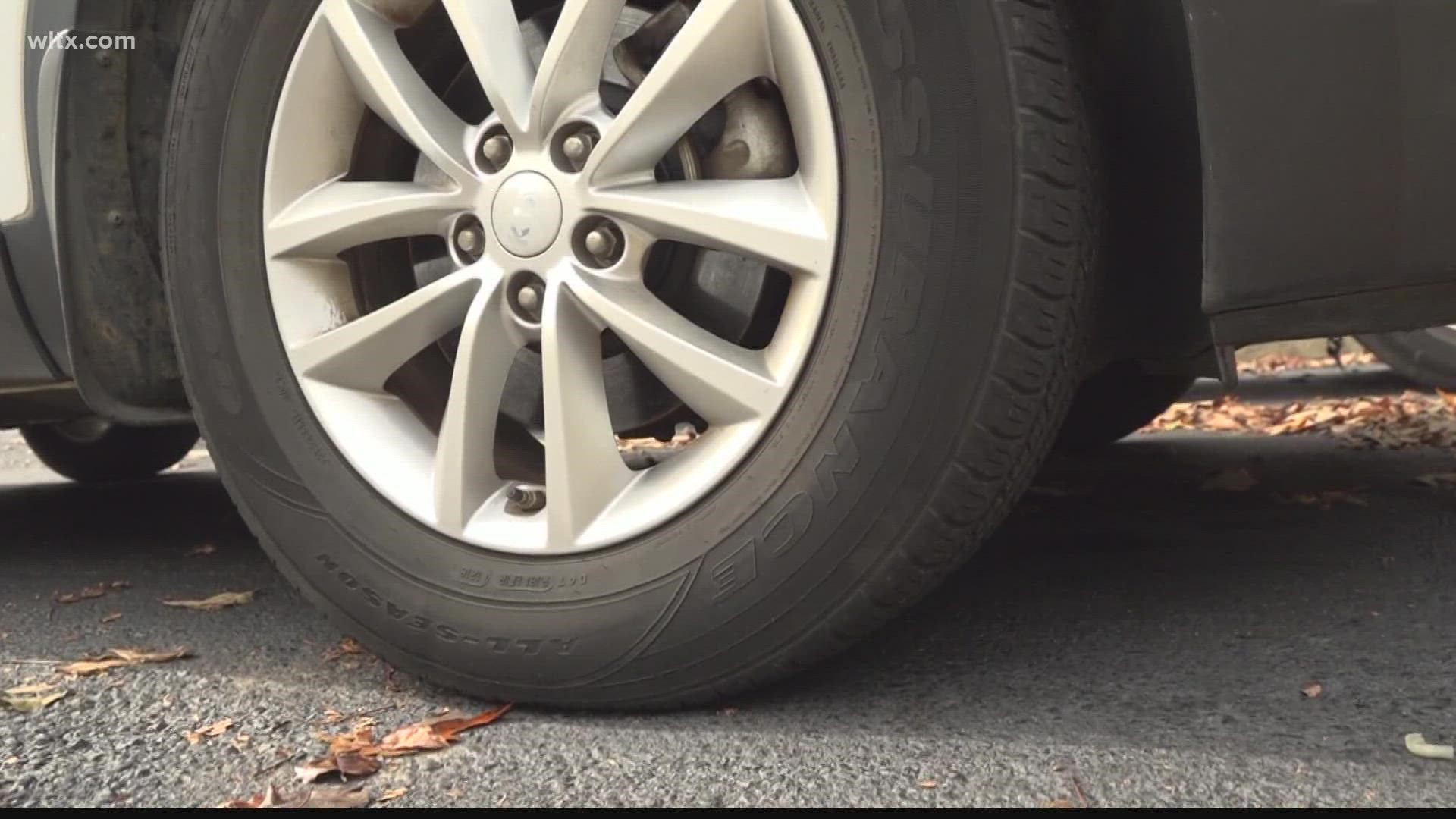COLUMBIA, S.C. — Temperatures have fallen quite drastically over the past few days. For many that means, bringing out the winter coat, turning on the heat, and also seeing a small light on their car dashboard make a return
As temperatures fall this time of the year you might notice a new light on your dashboard, the tire pressure sensor. Before we talk about why it lights up so often this time of the year let’s get into the science.
Density is calculated using a couple of different metrics but for our sake it is how much stuff is inside a given space.
Air takes up space but that can change given the conditions outside. When it is hot the molecules in the air expand and take up more volume. The opposite can be said for cold weather where the air shrinks taking up less space.

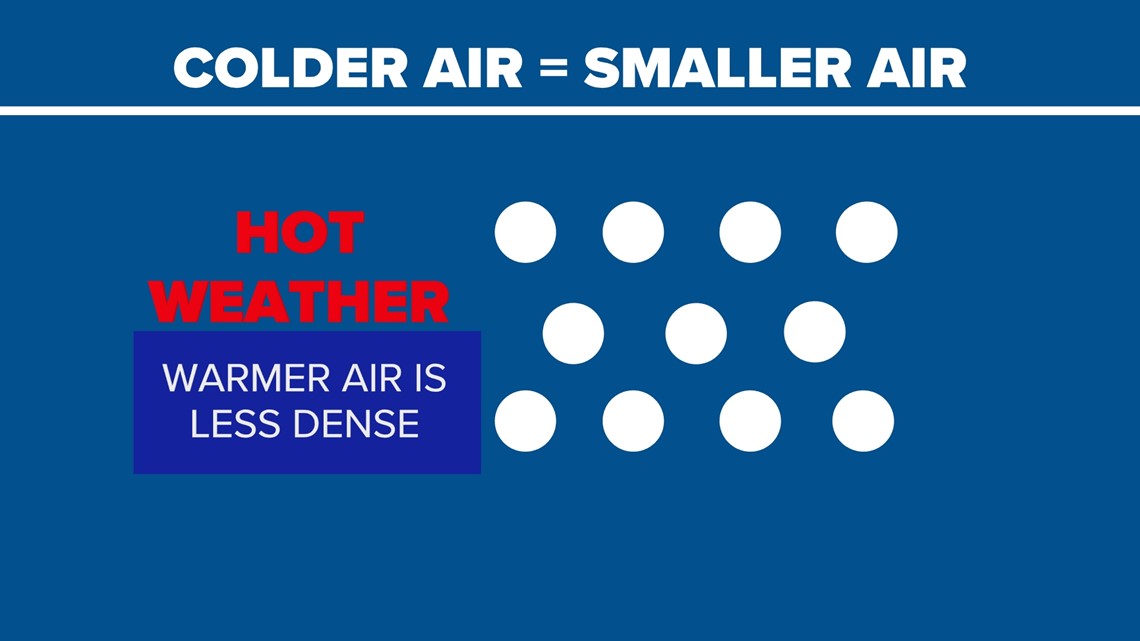

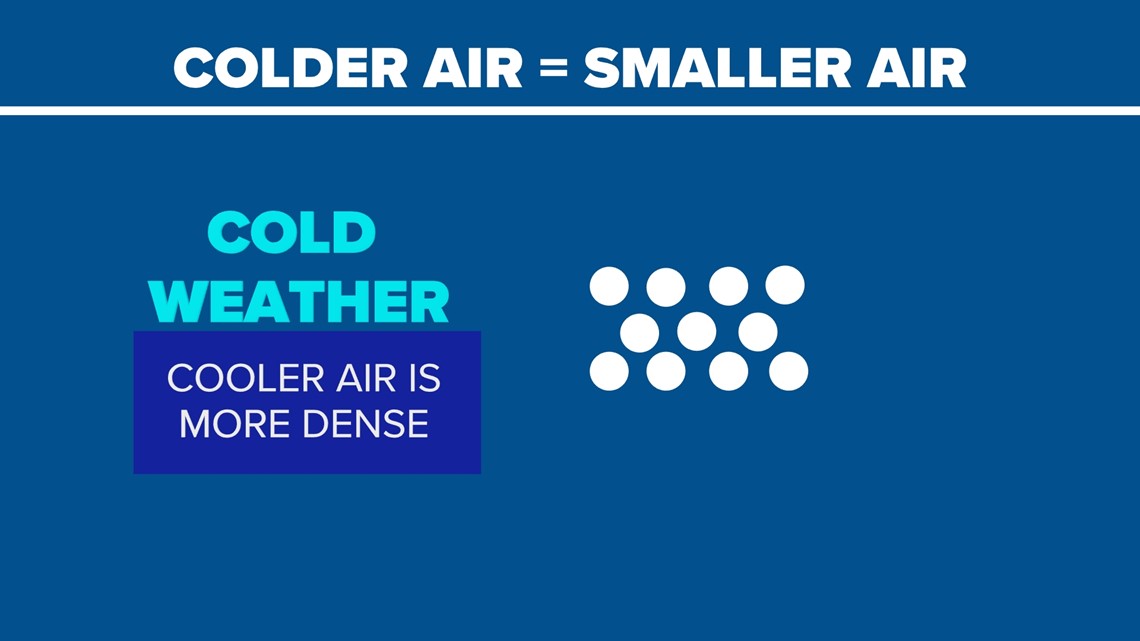
This is where tire pressure comes into play, for every 10 degree drop we see in our temperature, around 1-2 pounds per square inch are lost in the tire. In other words, the air has shrunk and isn’t creating as much pressure.
In a week like this one, our temperatures went from near 80 last Saturday to the 30s in the upcoming mornings, that could result in as much as 8 PSI loss in the tire!

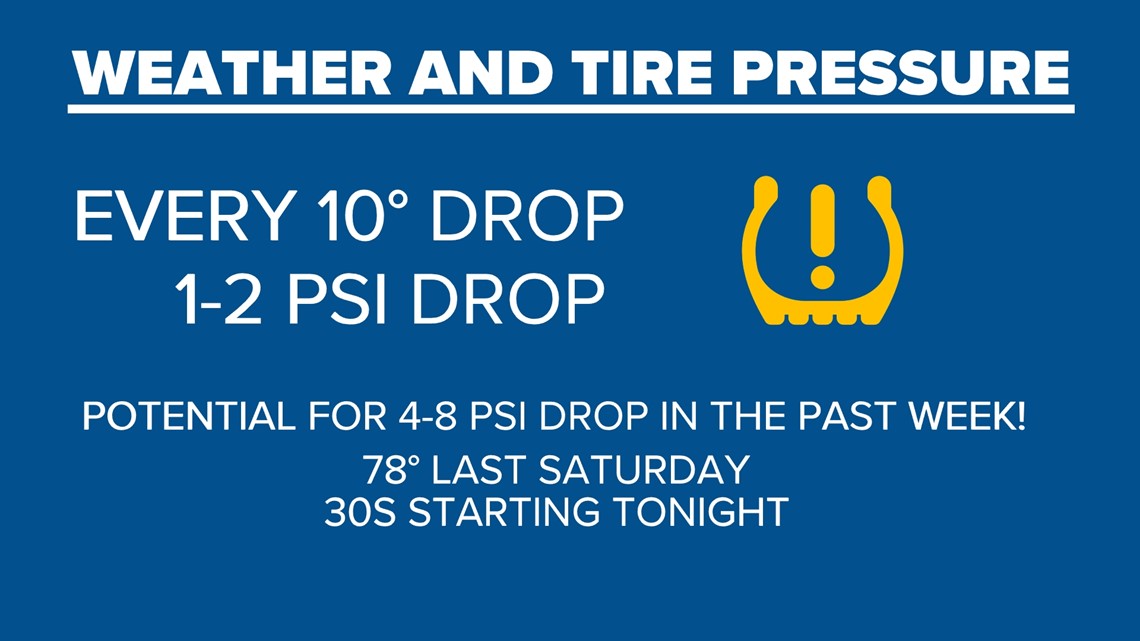
Why is this important? According to the US Department of Energy underinflated tires can change your gas mileage by .2% per PSI lost.
On top of this, things like braking distance, handling, and even the lifespan of your tire can be affected.
So, next time you see the tire pressure gauge lighting up, you can thank mother nature for causing the change.

